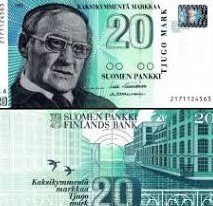Introduction
Haiti is a Caribbean nation with a rich cultural history and a unique economic landscape. At the heart of the country’s financial system is its unit of currency, the Haitian Gourde. It has evolved and is now issued by the Bank of the Republic of Haiti (BRH), which controls the money supply and policy.
What is the Haitian Gourde?
The Haitian Gourde is the official currency of Haiti, abbreviated as HTG. It is used by the Haitian government and is recognized as the country’s national currency. The Gourde has a long history, dating back to the early 19th century. It has changed over time and is now issued by the Bank of the Republic of Haiti (BRH), which controls the money supply and monetary policy. haitian unit of currency nyt
History of the Haitian Gourde
The Haitian Gourde was first introduced in 1813. Before that, Haiti used foreign currencies like the Spanish Dollar and the French Franc. Over the years, the Gourde has experienced several periods of devaluation due to economic instability, inflation, and political unrest. These fluctuations have affected the value of the currency and its purchasing power.
Haiti has faced economic challenges like inflation, high unemployment, and political instability, impacting the Gourde. The currency has often been subject to fluctuations when compared to major world currencies like the US Dollar and the Euro.
The Value of the Haitian Gourde
One of the most important factors to understand about the Haitian Gourde is its exchange rate. Like most currencies, the value of the Gourde is constantly changing. The Haitian Gourde’s exchange rate, especially against the US Dollar, is key to the economy.
In recent years, the Haitian Gourde has experienced periods of inflation, which has reduced its value. As of now, the exchange rate fluctuates regularly, and many Haitians use the US Dollar as an alternative currency for savings or large transactions.
How the Exchange Rate Affects the Haitian Economy
The exchange rate of the Haitian Gourde has significant effects on Haiti’s economy. A strong currency means that people can buy more goods and services, while a weak currency reduces purchasing power. Inflation and high exchange rates also affect the daily lives of Haitians, as imported goods become more expensive and the cost of living rises.
Inflation in Haiti has been a long-standing issue, and the Gourde has lost much of its value over time.
The Role of the Bank of the Republic of Haiti (BRH)
The Bank of the Republic of Haiti (BRH) plays a key role in stabilizing the Haitian Gourde. The central bank is responsible for regulating the Gourde’s money supply and implementing monetary policies that can influence its value. The BRH tries to manage inflation and maintain economic stability by adjusting interest rates and intervening in the currency markets when necessary.
Despite the efforts of the BRH, the Haitian Gourde has often been subject to extreme fluctuations due to global economic trends, domestic challenges, and political factors. This has made it challenging for many Haitians to plan for the future, as the value of their currency can change rapidly.
Foreign Exchange and Remittances
Another factor that impacts the Haitian Gourde is the flow of foreign exchange and remittances. Haiti is one of the largest recipients of remittances in the Caribbean. Many Haitian families abroad send money back home, and this money is often sent in US Dollars. The exchange of US Dollars into Haitian Gourdes plays a major role in the country’s economy.
“Foreign currency inflows support the local economy but also affect exchange rates. Large USD inflows may boost demand for the Haitian Gourde, stabilizing its value. However, if the demand for US Dollars is higher than the supply of Gourdes, the Haitian Gourde may depreciate.
Haitian Banknotes and Coins haitian unit of currency
The Haitian Gourde comes in both paper notes and coins. The banknotes range from 10 Gourdes to 1,000 Gourdes, and the coins range from 1 to 5 Gourdes. While the Gourde is used for everyday transactions, larger amounts are often handled in US Dollars due to the currency’s stability.
The Haitian government has introduced new banknotes over the years, and in recent times, they have focused on introducing security features to combat counterfeiting. The new currency notes are designed with enhanced security to prevent fraud and improve confidence in the Haitian Gourde.
Why is the Haitian Gourde Important for Haitians?
The Haitian Gourde plays a critical role in the daily lives of Haitian citizens. It is the currency used for buying goods, paying for services, and conducting business within the country. Despite the challenges the Haitian Gourde faces, it remains a symbol of national pride and economic sovereignty for the Haitian people. haitian unit of currency nyt
For many, the Gourde is not just a currency; it represents the resilience of the Haitian economy. However, due to inflation and devaluation, the Gourde has become less reliable over time, prompting many Haitians to turn to the US Dollar for savings and larger transactions.
The Future of the Haitian Gourde
Looking forward, the future of the Haitian Gourde remains uncertain. The Bank of the Republic of Haiti (BRH) is working to stabilize the currency and manage inflation, but external factors like global economic shifts, natural disasters, and political instability can continue to impact the Gourde’s value.
If Haiti is able to address these issues and strengthen its economy, it may lead to a more stable Haitian Gourde in the future. This would improve the purchasing power of the Gourde, reduce inflation, and ultimately benefit the people of Haiti.
Conclusion: haitian unit of currency
In conclusion, the Haitian Gourde is an integral part of Haiti’s economy and the daily lives of its people. Although it has faced challenges over the years, it continues to be the official currency of Haiti.The exchange rate, inflation, and the Bank of Haiti shape the Gourde’s future. Understanding this is key for anyone engaging with Haiti.





